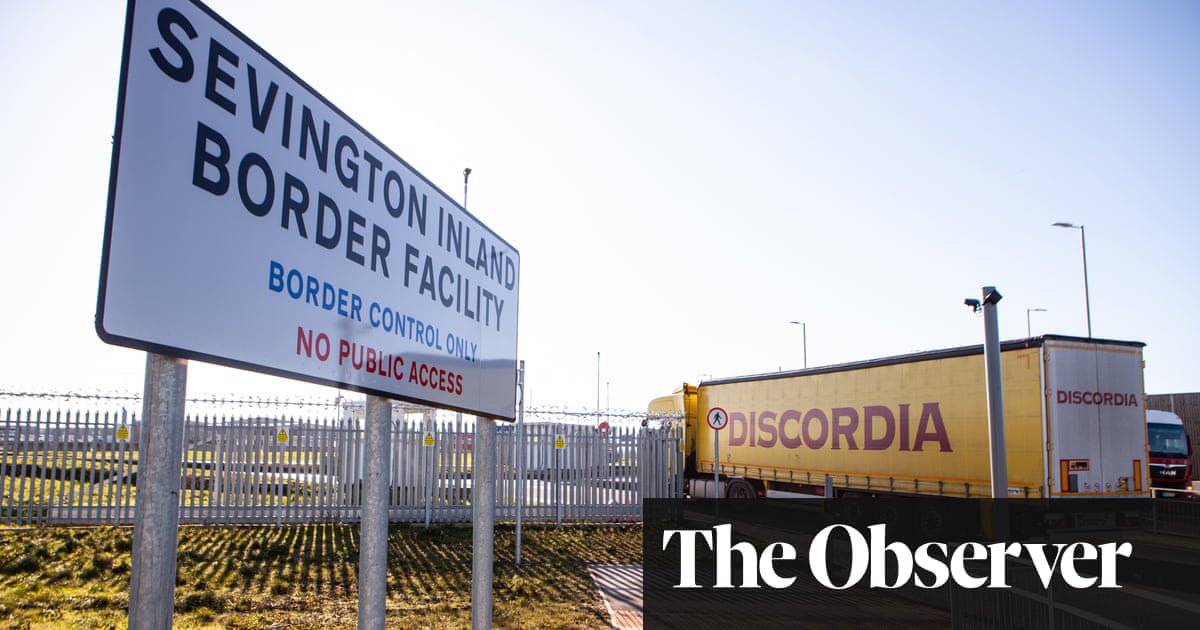
British ports will be given £10.5m in state support to prepare for increased border checks this autumn, when the EU’s much-delayed entry-exit system (EES) comes into effect.
The money will go to the Port of Dover, Eurotunnel’s Folkestone tunnel and St Pancras International in London, where Eurostar trains depart, to supplement investment in facilities to avoid long tailbacks at the borders.
The three ports are the only ones with “juxtaposed controls”, where effectively the French border is sited in UK territory.
All travellers to the EU will be forced to provide biometric information when EES is launched, including facial recognition and fingerprints. Under the EU rules, the data initially must be collected and verified by EU border officials, meaning the ports have had to devise ways of reducing the processing time and spend millions on infrastructure.
The government has allocated £3.5m to each port to help alleviate the risk of queueing and disruption – a small fraction of the money already spent.
The Port of Dover is filling in part of a marina to create space for ferry passengers to go through EES processing. The money will provide additional kiosks for passengers using Eurotunnel and Eurostar, as well as on recruiting and training more staff before the scheme’s implementation.
EES is due to come into effect on 10 November, after another delay was confirmed last month. While concerns have been raised in Britain about long queues at ports, and potential tailbacks into roads in Kent, most non-EU citizens will be processed on arrival at European airports, some of which have also struggled to be ready.
The migration minister, Seema Malhotra, who visited the Port of Dover and the Channel tunnel on Tuesday, said: “While EES checks will be a significant change to the EU border, we are working hard with the European Commission, member states and ports to ensure we are well prepared, and minimise any disruption for Britons travelling into Europe.”
The future of roads minister, Lilian Greenwood, said: “Since coming into government, we have been reviewing plans and closely supporting ports to make sure they have the right processes in place so that EES registration can be smooth and queue times kept to a minimum.”
The Eurotunnel owner, Getlink, has already spent more than £70m on new dedicated EES zones either side of the Channel tunnel to ensure users of its LeShuttle service are not stuck in long queues. Yann Leriche, its chief executive, said it meant “people will travel through the Channel tunnel just as easily as they do today”.
St Pancras and Eurostar have installed two sets of EES kiosks for economy and business passengers leaving London, as well as an overspill area upstairs in the station for times of peak congestion. The Eurostar chief safety and stations officer, Simon Lejeune, said it would be “fully prepared and compliant by November”.
The Port of Dover has been most concerned, due to the need for passengers to leave their cars to be checked, and the lack of space at the port which is constrained by the white cliffs. Its chief operations officer, Emma Ward, said: “We are doing all that we can to be ready with the facilities that will be used by French border officials operating the new system.”
Kent county council repeated its warnings of “gridlock” and the “unacceptable and unsustainable” impact of cross-border traffic queueing on the roads. The council’s leader, Roger Gough, said the county would “continue to press for urgent action, given that EES checks could result in extremely serious delays for international trade and those travelling through Kent, and the delivery of vital public sector services.”












